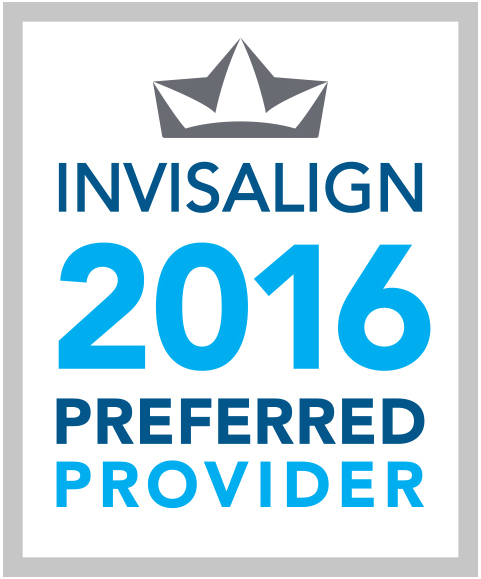How do I know if my child needs orthodontic treatment?
It is often difficult for a parent to determine if treatment is indicated. There may be serious orthodontic problems even though the front teeth look straight. Some problems that look intimidating and complex are easily treated. Asking your general dentist is a good place to start, but we are your best resource since orthodontics is all we do. The initial examination only takes a few minutes and is complimentary.
How do I know if my child needs orthodontic treatment?
The following suggestions may be helpful. Look at your child’s teeth.If you see crooked teeth, gaps between the teeth or overlapped teeth, your child may need orthodontic treatment. Ask your child to bite all the way down, keeping their lips open. Do the front top teeth line up with the bottom? Do the top teeth protrude out away from the bottom teeth? Do the top front teeth cover more than 50% of the bottom teeth? Are the top teeth behind the bottom teeth? If you see any of these conditions an orthodontist should evaluate your child. Look at the alignment of your child's jaw. Does the jaw shift off center when your child bites down? If you see any mal-alignment or shifting of the jaw, your child may have a skeletal problem.
Other common signs include:
- Early or late loss of primary teeth
- Difficulty in chewing or biting
- Mouth breathing
- Early treatment may prevent or intercept more serious problems from developing and may make treatment at a later age shorter and less complicated. In some cases, the orthodontist will be able to achieve results that may not be possible once the face and jaws have finished growing.
- Finger or thumb sucking habits beyond age 5
- Speech difficulty
- Biting the cheek or roof of the mouth
- Protruding teeth
- Teeth that don’t seem to meet in a normal matter, or don’t meet at all
These are only some of the more obvious signs. Other signs may be much more subtle and require a trained professional to detect.
When should an orthodontist see my child?
All children should receive their first orthodontic evaluation by age seven, or earlier if a problem is detected by parents, the family dentist, or the child’s physician. An early evaluation allows us to determine when a child’s particular problem should be treated. In many patients, early treatment provides results that are unattainable once the face and jaws have finished growing.
Will growth allow "self correction" of crowded teeth or bite problems?
Generally not, the jaws grow in the back to allow for eruption of the 12-year molars and wisdom teeth, but not in the front. In most children the amount of available space DECREASES as the permanent teeth erupt. Either in children or adults, untreated orthodontic problems usually become worse. Orthodontic treatment is often less expensive than the additional dental care needed to treat serious problems that often develop later in life.
Can you be too old for braces?
No. Age is not a factor, any adult in good general health with a healthy gums and supporting bone is a good candidate for ortho- dontic treatment. About 20% of our orthodontic patients are adults and that number is still growing!
Will it hurt?
Orthodontic treatment has improved dramatically. As a rule, braces make your teeth sore for a day or 2 after they are placed or adjusted, but it is not "painful". Today's braces are smaller and more comfor-table. High tech wires move the teeth more efficiently and with less discomfort.
Can I still have braces if I have missing teeth?
Yes. When teeth are missing adjacent teeth will drift into the empty space. This often causes functional, esthetic or periodontal problems.Orthodontic treatment can close the space or provide proper alignment for your dentist to replace the missing teeth.
What are the benefits of braces?
- Having straight teeth that fit together properly improves function. Your teeth and jaw joints can work more efficiently.
- Straight teeth are easier to clean.
- Should you ever need a filling, crown or bridge, you dentist can usually do a better job if the teeth are properly aligned.
- The appearance of the smile and face are improved. Having a pleasing smile can improve self-esteem, confidence, and a feeling of acceptance in daily life.
What is a "malocclusion"?
Malocclusion literally means "bad bite"
What is Phase I (Interceptive Treatment) and Phase II treatment?
Phase I (Interceptive Treatment) is indicated for some orthodontic problems. It usually begins when the permanent first molars and permanent incisors are erupted (age 6 or 7). The goal of Phase I treatment is to "intercept" an orthodontic problem before it becomes more severe and/or more difficult to treat. Problems commonly treated in Phase 1 include severe skeletal imbalances, cross bites and severe crowding.Interceptive treatment can make difficult orthodontic problems more manageable. In addition, early correction of some problems produces the most stable results. Most Phase I patients will require a second phase of treatment (Phase II) for optimal results. Phase II treatment usually occurs a number of years later when most or all of the permanent teeth have erupted. (Generally age 10-12). The goal of Phase II treatment is to achieve optimal alignment and bite of all permanent teeth.
What is Full or Comprehensive Orthodontic Treatment?
This is another name for orthodontic treatment in the permanent dentition at any age. It is more commonly used when a Phase I treatment was not performed.
Does everyone need a Phase I treatment?
Absolutely not! Only certain bites require early intervention. All others can wait until most or all or the permanent teeth are erupted.
Can I wait on Phase I/Interceptive Orthodontic Treatment until my child is older?
Failure to provide appropriate Phase I treatment at the correct time can limit later treatment options, compromise stability of the result,and necessitate extractions or surgery.
How long will treatment last?
Treatment typically lasts from 6 months to 30 months depending on the age of the patient, severity of the problem, and the level of patient cooperation.
What is extraction and non-extraction therapy?
Selected permanent teeth are removed in extraction therapy to make room for crowded teeth, to correct bite relationships, or to change the facial profile. Non-extraction therapy does not require the removal of permanent teeth.The doctors will discuss the "pro’s and con’s" of different treatment options at your New Patient Examination, and again at the Consultation Appointment.
What is orthognathic (maxillofacial) surgery?
Orthognathic surgery combines orthodontic treatment with surgery of the jaw to correct or establish a stable, functional balance between the teeth, jaws, and facial structures. The goal of maxillofacial surgery is to treat any jaw imbalance and the resulting incorrect bite, which could adversely affect the cosmetic (esthetic) appearance as well as the proper functioning of the teeth. This procedure involves diagnosis, treatment planning, and execution of treatment by combining orthodontics and oral/maxillofacial surgery to correct musculoskeletal, dento-osseous, and soft tissue deformities of the jaws and associated structures.
What does "orthognathic" mean?
The word "orthognathic" was coined by an oral/maxillofacial surgeon and means "straight jaws," just as orthodontics means "straight teeth." Prior to that time, the term surgical orthodontics or "facial orthopedics" was used to describe this medical specialty.
When is orthognathic surgery required?
Orthognathic surgery is needed when jaws do not meet correctly and/or when the teeth do not seem to fit with the jaws. The teeth are straightened with orthodontics, and corrective jaw surgery repositions the mal-aligned jaws. This not only improves the facial appearance (esthetics), but also ensures that teeth meet correctly and function properly.
Who needs orthognathic surgery?
There are many different types of abnormalities of the jaw structures that can result in facial deformity and improper bite. These abnorm alities in the jaws and facial bones may be congenital (present at birth) or developed during growth and development. They may also be acquired after birth as a result of hereditary, environmental nfluences, or trauma/illness to the face. It has been estimated that dentofacial (involving the teeth and face) deformities affect approximately 20 percent of the population.
Any individual with difficulty in the following areas should be evaluated for possible orthognathic surgery:
- difficulty in chewing, biting, or swallowing
- speech problems
- chronic jaw or TMJ (temporomandibular joint) pain
- open bite
- protruding jaw
- breathing problems
What are the basic goals of orthognathic surgery?
The specific goal for orthognathic surgery will vary from patient to patient, depending on the actual diagnosis. In general, the team will address the following:
- function (normal chewing, speech, ocular (eye) function, and respiratory function)
- aesthetics (establish facial harmony and balance)
- stability (avoid short- and long-term relapse)
- minimize treatment time (provide efficient and effective treatment)
What is involved in the evaluation and diagnosis of orthognathic surgery?
The most important aspect of overall patient management is a thorough evaluation and diagnosis. Patient evaluation for orthognathic surgery can be divided into four main areas:
- patient concerns or chief complaints
- clinical examination
- radiographic and imaging analysis (x-rays)
- dental model analysis
After an examination by each of the orthognathic surgery team members (dentist, orthodontist, and maxillofacial/oral surgeon), a diagnosis is made and a coordinated treatment plan is prepared. The complete process usually takes place in several stages over the course of one to two years.
Treatment process of orthognathic surgery:
The treatment process occurs in stages. Any general dental maintenance, prevention, or restoration should be performed prior to orthodontic and surgical intervention. Then, the first stage of treatment is the alignment of the teeth into a stable relationship with the underlying jaw by orthodontics, which prepares the dentalarches for the surgical repositioning. This stage usually takes the longest, from a few months to over a year. At this stage, the abnormal bite (malocclusion) may become more noticeable.Once ready for the surgical procedures, the orthodontist and maxillofacial surgeon will review photographs, x-rays, and dental models to finalize the surgical plan. The operation may involve a single jaw or both jaws (maxilla and mandible). The surgery may also be combined with other procedures, such as rhinoplasty (nose correction) or genioplasty (chin correction) to improve the general appearance of the face.:
How long is the surgery?
The procedure may take two to four hours, depending on the complexity. Most patients are kept in the hospital for two to five days, depending on the specifics of the procedure and the postoperative condition.
How long is the recovery?
Most patients return to their normal activities within a week or two after their surgery. The surgeon will monitor the healing, and review the changes in the facial structures and occlusion (bite). The orthodontist will adjust the braces to fit the new repositioned jaw.Orthodontic treatment may continue for several months to ensure optimal positioning of the teeth.




